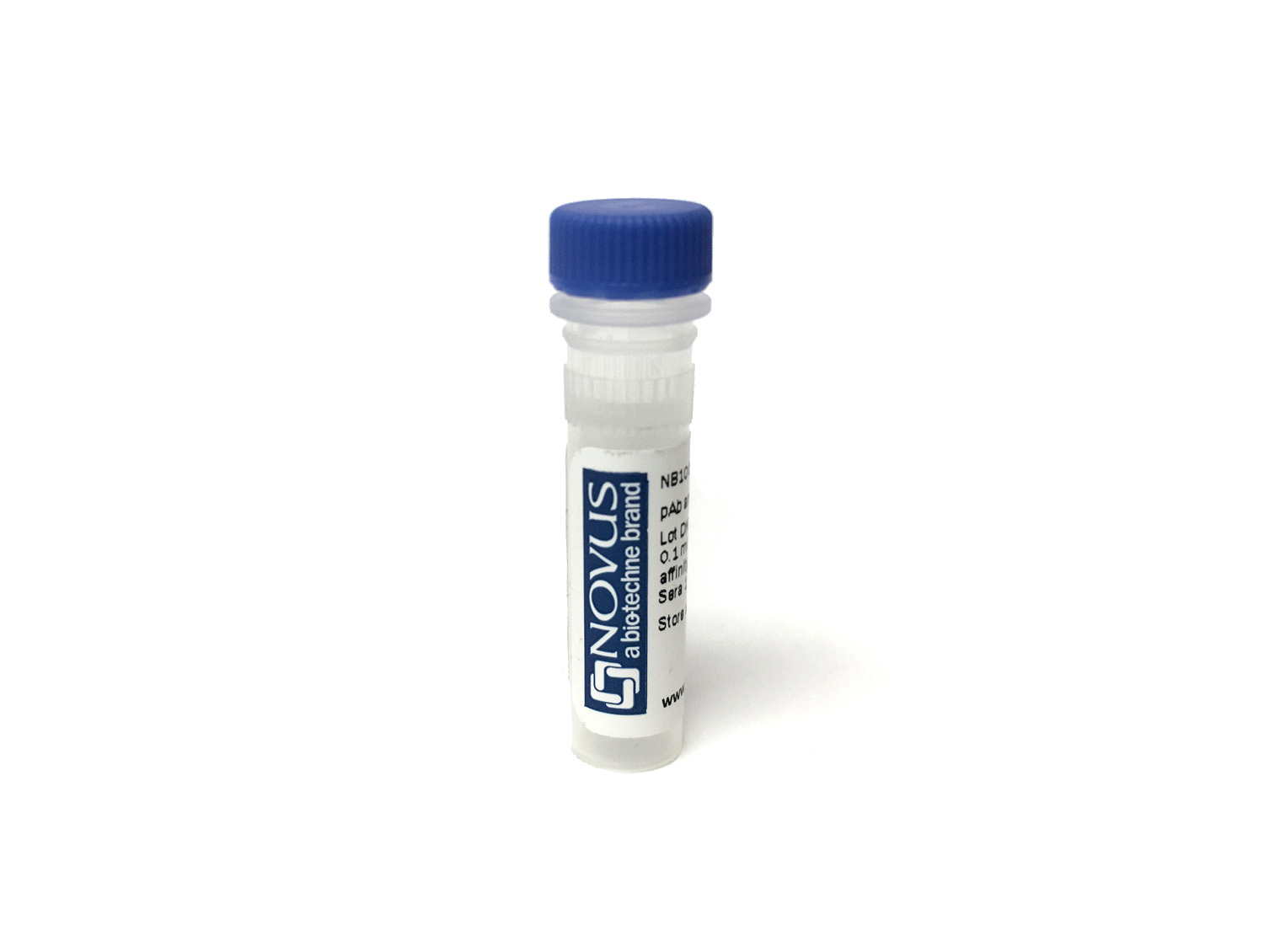CD28 Antibody (CD28.2) [HRP]
Novus Biologicals, part of Bio-Techne | Catalog # NBP1-79126H
Clone CD28.2 was used by HLDA to establish CD designation.


Conjugate
Catalog #
Forumulation
Catalog #
Key Product Details
Species Reactivity
Human, Primate
Applications
CyTOF-ready, Flow Cytometry, Immunocytochemistry/ Immunofluorescence, Immunohistochemistry, Immunohistochemistry-Frozen, Immunoprecipitation, Western Blot
Label
HRP
Antibody Source
Monoclonal Mouse IgG1 kappa Clone # CD28.2
Concentration
Please see the vial label for concentration. If unlisted please contact technical services.
Product Specifications
Immunogen
DC28.1.3.3 murine T cell hybridoma transfected with human CD28 cDNA
Specificity
The antibody CD28.2 reacts with CD28, a disulfide-linked homodimeric type I glycoprotein (monomer of Mw 44 kDa) which is a critical costimulatory receptor of T cells. HLDA V.; WS Code 5T CD28.05
Clonality
Monoclonal
Host
Mouse
Isotype
IgG1 kappa
Applications for CD28 Antibody (CD28.2) [HRP]
Application
Recommended Usage
CyTOF-ready
Optimal dilutions of this antibody should be experimentally determined.
Flow Cytometry
Optimal dilutions of this antibody should be experimentally determined.
Immunocytochemistry/ Immunofluorescence
Optimal dilutions of this antibody should be experimentally determined.
Immunohistochemistry
Optimal dilutions of this antibody should be experimentally determined.
Immunohistochemistry-Frozen
Optimal dilutions of this antibody should be experimentally determined.
Immunoprecipitation
Optimal dilutions of this antibody should be experimentally determined.
Western Blot
Optimal dilutions of this antibody should be experimentally determined.
Formulation, Preparation, and Storage
Purification
Protein A purified
Formulation
PBS
Preservative
No Preservative
Concentration
Please see the vial label for concentration. If unlisted please contact technical services.
Shipping
The product is shipped with polar packs. Upon receipt, store it immediately at the temperature recommended below.
Stability & Storage
Store at 4C in the dark.
Background: CD28
CD28 is the prototypical and best-characterized costimulatory molecule on T cells (4). Its signals are critical for optimal naive T cell activation, cytokine production, proliferation, and survival (4). In order to sustain T cell activation, CD28 will consolidate immunological synapse formation, increase cell cycle progression through upregulated D-cyclin expression, and aid in T cell survival by in inducing the expression of the anti-apoptotic protein Bcl-XL (5). CD28 is constitutively expressed on naive and central memory CD4+ and CD8+ cells (5). CD28 deficiency has a large impact on T cell responses including activation, proliferation, immunoglobulin (Ig) class-switching, and germinal center (GC) formation (6). CD28 is a critical regulator of autoimmune diseases and tolerance to solid organ transplants in human patients (6). The CD28 pathway plays a central role in immune responses against pathogens, autoimmune diseases, and graft rejection (7). CD28 engagement via antibodies augments the proliferation of T cells in response to immobilized anti-CD3 antibodies (8). Additionally, antibody engagement of CD28 can supply costimulation to T cells encountering APCs deficient in costimulatory ligands, such as CD80 and CD86, and prevents the resultant anergic state that otherwise occurs in the absence of costimulatory signaling (8).
References
1. Esensten, J. H., Helou, Y. A., Chopra, G., Weiss, A., & Bluestone, J. A. (2016). CD28 Costimulation: From Mechanism to Therapy. Immunity, 44(5), 973-988. https://doi.org/10.1016/j.immuni.2016.04.020
2. Carreno, B. M., & Collins, M. (2002). The B7 family of ligands and its receptors: new pathways for costimulation and inhibition of immune responses. Annual review of immunology, 20, 29-53. https://doi.org/10.1146/annurev.immunol.20.091101.091806
3. Ward S. G. (1996). CD28: a signaling perspective. The Biochemical journal, 318 (Pt 2), 361-377. https://doi.org/10.1042/bj3180361
4. Zhang, R., Huynh, A., Whitcher, G., Chang, J., Maltzman, J. S., & Turka, L. A. (2013). An obligate cell-intrinsic function for CD28 in Tregs. The Journal of clinical investigation, 123(2), 580-593. https://doi.org/10.1172/JCI65013
5. Evans, E. J., Esnouf, R. M., Manso-Sancho, R., Gilbert, R. J., James, J. R., Yu, C., Fennelly, J. A., Vowles, C., Hanke, T., Walse, B., Hunig, T., Sorensen, P., Stuart, D. I., & Davis, S. J. (2005). Crystal structure of a soluble CD28-Fab complex. Nature immunology, 6(3), 271-279. https://doi.org/10.1038/ni1170
6. Bour-Jordan, H., & Blueston, J. A. (2002). CD28 function: a balance of costimulatory and regulatory signals. Journal of clinical immunology, 22(1), 1-7. https://doi.org/10.1023/a:1014256417651
7. Krummel, M. F., & Allison, J. P. (1995). CD28 and CTLA-4 have opposing effects on the response of T cells to stimulation. The Journal of experimental medicine, 182(2), 459-465. https://doi.org/10.1084/jem.182.2.459
8. Luhder, F., Huang, Y., Dennehy, K. M., Guntermann, C., Muller, I., Winkler, E., Kerkau, T., Ikemizu, S., Davis, S. J., Hanke, T., & Hunig, T. (2003). Topological requirements and signaling properties of T cell-activating, anti-CD28 antibody superagonists. The Journal of experimental medicine, 197(8), 955-966. https://doi.org/10.1084/jem.20021024
Additional CD28 Products
Product Documents for CD28 Antibody (CD28.2) [HRP]
Product Specific Notices for CD28 Antibody (CD28.2) [HRP]
This product is for research use only and is not approved for use in humans or in clinical diagnosis. Primary Antibodies are guaranteed for 1 year from date of receipt.
